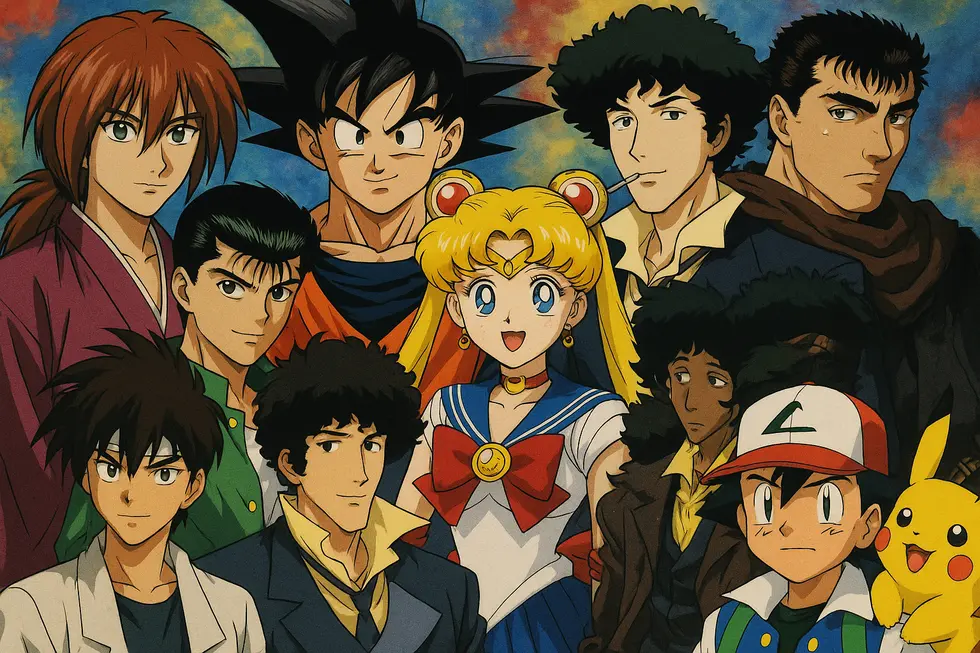Wstęp
The 1990s were a transformative decade for anime, with groundbreaking series that transcended borders and defined a generation. From epic battles and deep philosophical explorations to magical adventures and heartwarming tales, the anime of the 90s offered something for everyone. These series not only entertained but also influenced the cultural landscape, inspiring fans globally. Each chapter of this article delves into one iconic series from this era, highlighting its impact and enduring legacy.
Spis treści
Dragon Ball Z: Jak Technologia Zmieniła Oblicze Anime Lat 90.
- Innowacyjne Techniki Animacji w Dragon Ball Z: Jak Shounen Zdefiniował Dekadę
- Kulturowy i Społeczny Fenomen: Wpływ Dragon Ball Z na Młodzież i Popkulturę lat 90.
Neon Genesis Evangelion: Psychological and Philosophical Depth in Mecha Anime of the 90s
- Mythic Symbolism and Psychological Collapse in Neon Genesis Evangelion
- Character Studies and Thematic Exploration in Neon Genesis Evangelion: The Intricate Layers of 90s Mecha
Sailor Moon: Globalna Rewolucja Magical Girl Lat 90.
- Kulturowy Odzew na Sailor Moon: Magia, Girl Power i Emancypacja
- Merchandising Mastery and Cultural Impact: Sailor Moon’s Global Reach
Yu Yu Hakusho: Shaping the 90s Anime Landscape Through Compelling Characters
- Enduring Heroes of Yu Yu Hakusho: The Legacy of Character Popularity
- Exploring the Deep Characters and Moral Complexity in Yu Yu Hakusho’s Storytelling
Pokémon: A 90s Cultural Milestone That Defined Generations
- The Astonishing Global Reach of Pokémon in the 90s
- Economic Impact of Pokémon: Revolutionizing the 90s Entertainment Landscape
Rurouni Kenshin: The Fusion of Historical Depth and Dynamic Action in 90s Anime
- Capturing the Essence of the Meiji Era: Historical Reflections in Rurouni Kenshin
- Redemption and Reflection: The Heart of Samurai Conflict in Rurouni Kenshin
Dragon Ball Z: Jak Technologia Zmieniła Oblicze Anime Lat 90.
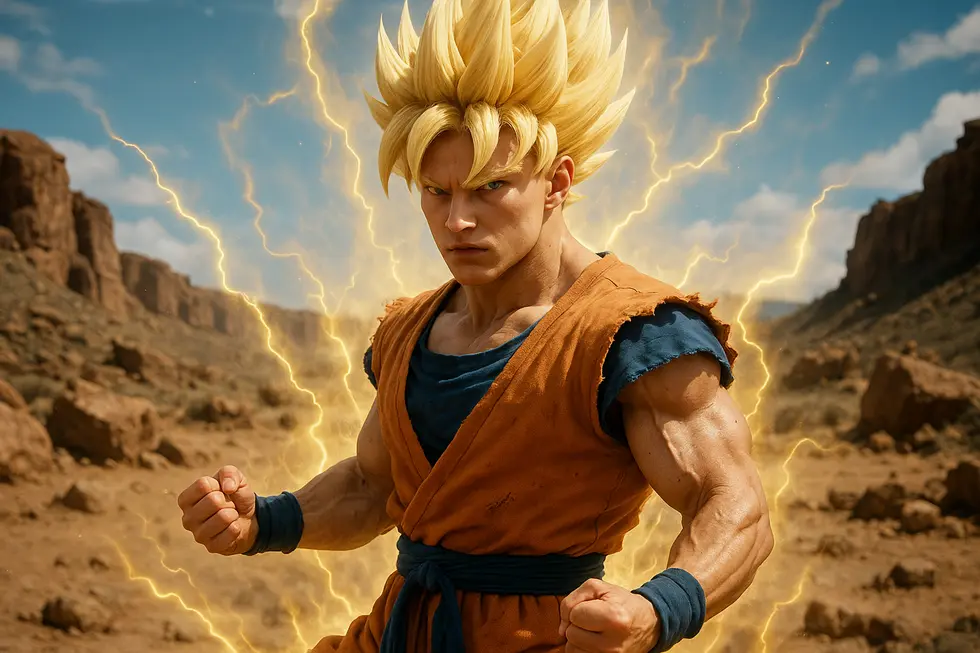
1. Innowacyjne Techniki Animacji w Dragon Ball Z: Jak Shounen Zdefiniował Dekadę
Dragon Ball Z w latach 90. nie tylko zrewolucjonizowało gatunek shounen, ale także wpłynęło na technologiczną ewolucję technik animacji. Seria była świadkiem przejścia od tradycyjnych metod cieniowania znanych z mangi do bardziej wyrazistych kolorów, które odzwierciedlały estetykę anime. Akira Toriyama, twórca, dostosował swój styl, by uwzględniał wyraźne separacje kolorów, co nie tylko zwiększyło klarowność wizualną, ale również uprościło proces kolorowania. Toei Animation wykorzystało te techniki, tworząc niezwykle dynamiczne sceny walk. Mimo ograniczeń budżetowych, animacje te były przełomowe dzięki połączeniu strategii walki i ekspresyjnej sztuki. Przeczytaj więcej
2. Kulturowy i Społeczny Fenomen: Wpływ Dragon Ball Z na Młodzież i Popkulturę lat 90.
Dragon Ball Z, jako symbol lat 90., przetransformował nie tylko przemysł anime, ale także wywarł głęboki wpływ na globalną kulturę młodzieżową. Stał się międzynarodowym punktem odniesienia dla gatunku shounen, zmieniając scenariusze opowieści oraz styl animacji. DBZ uwypuklał wartości takie jak wytrwałość i przyjaźń, odciskając piętno na pokoleniu, które dorastało z Goku. Seria przyczyniła się również do rosnącej popularności anime poza Japonią, zwłaszcza w krajach zachodnich, gdzie ludzie zaczęli kojarzyć Japonię z fascynującym światem anime. DBZ wyznaczyło standardy dla przyszłych produkcji, wprowadzając motywy walk opartych na energii i ewolucji postaci przez trudności. Równocześnie serial zrodził rozbudowane społeczności fanowskie, organizujące konwenty i tworzące fanowskie dzieła sztuki. To właśnie dzięki takim kulturowym i społecznym wkładom Dragon Ball Z stało się fundamentem nie tylko anime lat 90., ale także współczesnej percepcji kultury japońskiej. Więcej informacji na temat jego wpływu można znaleźć w artykule CBR.
Neon Genesis Evangelion: Psychological and Philosophical Depth in Mecha Anime of the 90s
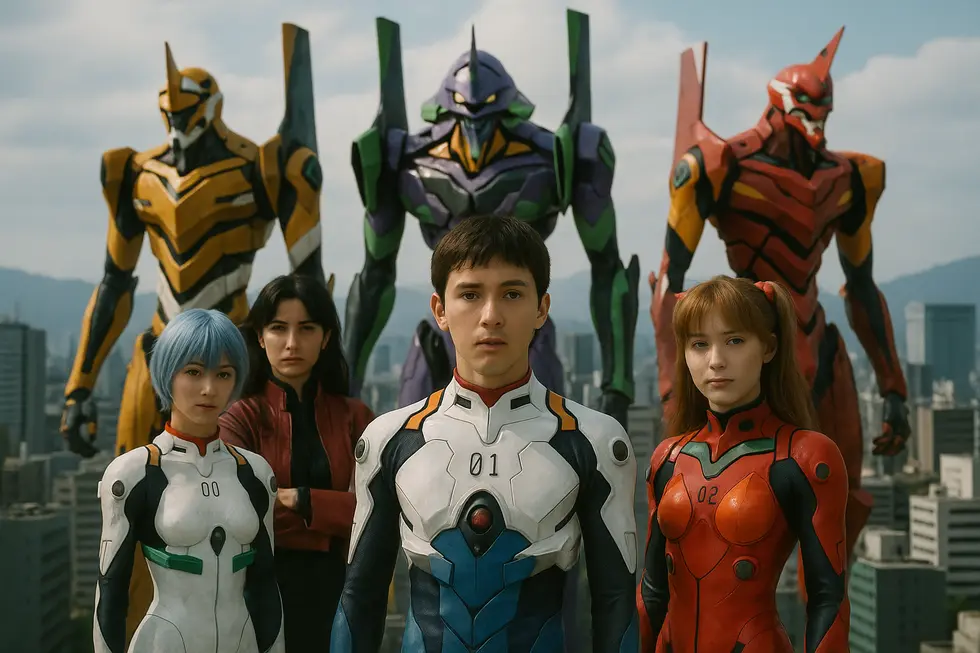
1. Mythic Symbolism and Psychological Collapse in Neon Genesis Evangelion
In the complex narrative of Neon Genesis Evangelion (NGE), mythic symbolism and psychological themes intertwine to explore existential crises. The anime employs elements from Judeo-Christian mythology, like angels, Adam, and Lilith, to not only create a rich tapestry of mythological references but to mirror the internal struggles of its characters. Evangelion Unit 01, containing the soul of protagonist Shinji’s mother, links to Lilith, symbolizing themes of maternal bonds and rebellion against divine order. These multilayered symbols portray the psyche’s collapse and identity fragmentation, heightened by Japan’s 90s social issues. Through a bleak landscape, NGE refrains from offering simplistic resolutions, instead presenting a ritualistic journey through chaos and identity loss.
For further analysis, explore this perspective.
2. Character Studies and Thematic Exploration in Neon Genesis Evangelion: The Intricate Layers of 90s Mecha
Neon Genesis Evangelion distinguishes itself through its multifaceted exploration of character psychology and thematic depth. The series unfolds around central characters Rei Ayanami, Shinji Ikari, and Asuka Langley Soryu, each reflecting distinct psychological intricacies. Rei epitomizes themes of identity and alienation with her mechanical existence and detachment, while Shinji grapples with self-worth and trauma, often seeking acceptance amidst internal chaos. Asuka’s facade of confidence belies deep-seated vulnerabilities. Philosophically, the series transcends traditional mecha boundaries, delving into existential questions about human consciousness, death, and loneliness. Creator Hideaki Anno interweaves psychoanalysis with religious symbolism, creating an introspective narrative that set a new standard for narrative complexity in the anime landscape of the 90s.
Sailor Moon: Globalna Rewolucja Magical Girl Lat 90.

1. Kulturowy Odzew na Sailor Moon: Magia, Girl Power i Emancypacja
Sailor Moon, stworzona przez Naoko Takeuchi i po raz pierwszy opublikowana w 1992 roku, stała się przełomowym zjawiskiem kulturowym lat 90., definiując gatunek magical girl na całym świecie. Seria łączyła tradycyjne elementy tego gatunku z innowacyjnymi wpływami z innych serii, takich jak Saint Seiya, a także wprowadzała złożone wątki seksualne i dynamikę postaci, rzadko spotykane w tamtym czasie.
Wpływ Sailor Moon na kulturę globalną był ogromny, szczególnie wśród młodych dziewcząt, które inspirowała tematami zgodnymi z feministycznymi ideami i ruchem Girl Power. Wizerunek silnych bohaterek kroczących ścieżką sprawiedliwości, wspierających się nawzajem, resonował z widzami na całym świecie, wpajając idee solidarności i siły. Mimo cenzury, jakiej podlegały queerowe wątki w zachodnich adaptacjach, takie relacje jak między Haruką i Michiru są dziś uznawane za pionierskie dla reprezentacji różnorodności w mediach.
Ekonomicznie, Sailor Moon zrewolucjonizowała rynek magical girl, związując fabułę z innowacyjną strategią merchandisingową, celowaną nie tylko do młodszej widowni, lecz także do “kidults”. Sukces ten zaowocował tworzeniem licznych linii zabawek, w tym przedmiotów transformacji i lalek, które zapewniały wysokie zyski od lat 90. aż po dzień dzisiejszy.
2. Merchandising Mastery and Cultural Impact: Sailor Moon’s Global Reach
Sailor Moon’s merchandising strategies in the 1990s were pivotal in establishing its global magical girl status. The franchise deployed a diverse range of products such as apparel, toys, and collectibles to captivate its audience worldwide. Dedicated stores, like the Sailor Moon Store in Harajuku, offered exclusive merchandise, becoming essential destinations for fans. The merchandise often highlighted characters like Usagi Tsukino, reinforcing fandom loyalty. Importantly, the series’ themes of empowerment resonated strongly, reflected in marketing efforts that emphasized relatable, strong female characters. With international broadcasts, such as on Cartoon Network’s Toonami, Sailor Moon transcended cultural barriers, further fueling demand and even inspiring a wave of bootleg products that testified to its cultural penetration.
Yu Yu Hakusho: Shaping the 90s Anime Landscape Through Compelling Characters
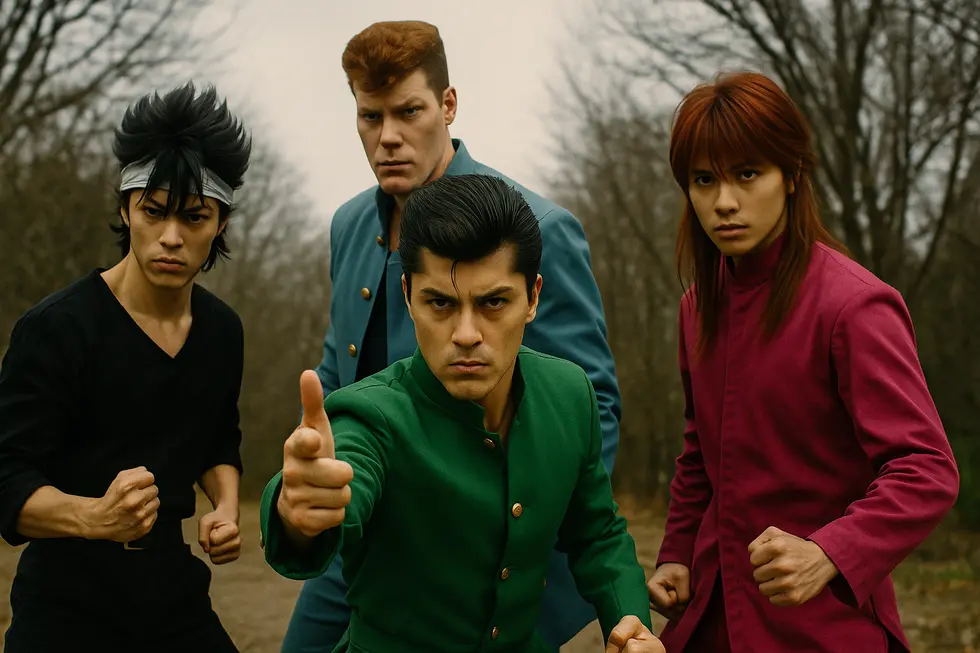
1. Enduring Heroes of Yu Yu Hakusho: The Legacy of Character Popularity
The anime series Yu Yu Hakusho, a hallmark of 90s anime, is celebrated for its complex characters who captivated audiences and left an indelible mark on the genre. Characters like Kurama and Kuwabara became iconic, with Kurama enjoying high rankings in popularity polls during the 90s, even securing top spots in Newtype magazine’s lists. This sustained popularity highlights the characters’ intricate designs and deep development, factors that redefined the shonen genre by blending action with sophisticated narratives. The series’ influence is evident in its legacy of inspiring new anime creators, setting a precedent for darker, complex storytelling. This character depth was part of a broader cultural impact, endearing Yu Yu Hakusho to generations of fans. For more details on the character impact and legacy, refer to the Wikipedia list of Yu Yu Hakusho characters.
2. Exploring the Deep Characters and Moral Complexity in Yu Yu Hakusho’s Storytelling
Yu Yu Hakusho set itself apart in the 90s anime landscape with its unique approach to storytelling. It diverged from traditional shonen formulas by emphasizing deep character arcs, especially for its protagonist, Yusuke Urameshi. His evolution from a delinquent to a spirit detective is marked by emotional growth and inner conflict, elements that engaged fans deeply. The series also portrayed villains as rich, complex characters, whose motivations were far from black-and-white, adding a layer of moral complexity that was rare for the genre. This narrative approach resonated with audiences, elevating the anime’s storytelling standards. Thematically, it tackled redemption, friendship, and the intersection of human and spirit realms, blending martial arts action with existential exploration. This thematic richness, combined with intense battles and poignant moments, contributed to Yu Yu Hakusho’s lasting impact on anime fandom, fostering greater appreciation for sophisticated narratives among viewers. For further in-depth analysis of its story arcs, you can refer to the detailed Yu Yu Hakusho Arcs PDF.
Pokémon: A 90s Cultural Milestone That Defined Generations
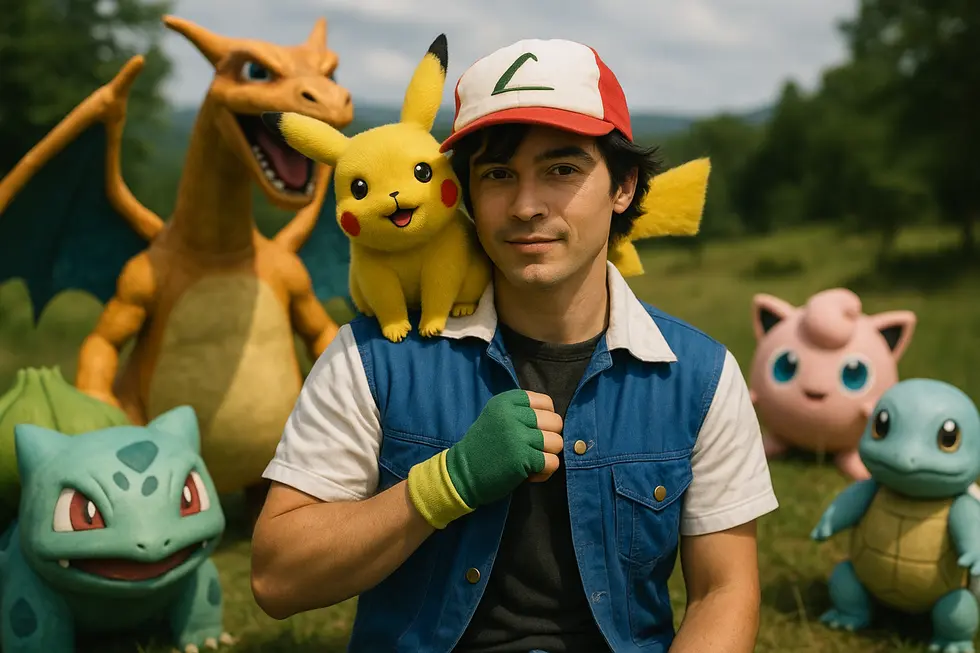
1. The Astonishing Global Reach of Pokémon in the 90s
The cultural impact of Pokémon as a 90s global phenomenon was tremendous, reaching audiences worldwide through the massive success of its video games, trading cards, and especially the anime series. During the era known as “Pokémania” from 1998 to 2000, Pokémon inspired a universal craze, weaving together themes of adventure, friendship, and perseverance that resonated across cultures and ages. The original games shattered sales records, the trading card game distributed billions of cards, and the anime became one of the highest-rated children’s shows globally, broadcasting in over 190 countries. Pokémon not only enhanced the global popularity of anime, especially in North America and Europe, but also permeated broader pop culture with lucrative merchandise, including toys and films. However, this massive cultural imprint also sparked controversies, such as accusations of racial insensitivity in character designs like Jynx. Pokémon’s unprecedented cross-media success solidified its status as a cultural cornerstone and a defining experience for multiple generations. For more insights, visit Wikipedia’s page on Pokémon’s history during Pokémania.
2. Economic Impact of Pokémon: Revolutionizing the 90s Entertainment Landscape
The economic influence of Pokémon as a worldwide phenomenon in the 90s has been monumental. Since its debut in 1996, Pokémon transformed from a video game into the world’s highest-grossing media franchise, amassing between $98 billion and $118 billion by the mid-2020s. Its success transcended multiple industries, covering video games, animation, trading cards, merchandise, and licensing. The initial Game Boy release sparked “Pokémania,” leading to explosive growth for companies like 4Kids Entertainment, which saw a thirtyfold revenue increase. Pokémon’s integration across gaming, TV, and movies demonstrated a pioneering global media mix strategy, setting standards for cross-platform monetization. Retail sales alone hit $10.8 billion as recently as 2023, underscoring its massive commercial footprint akin to giants such as Disney. For more details on Pokémon’s financial impact among media franchises, explore the Wikipedia List of Highest-Grossing Media Franchises.
Rurouni Kenshin: The Fusion of Historical Depth and Dynamic Action in 90s Anime
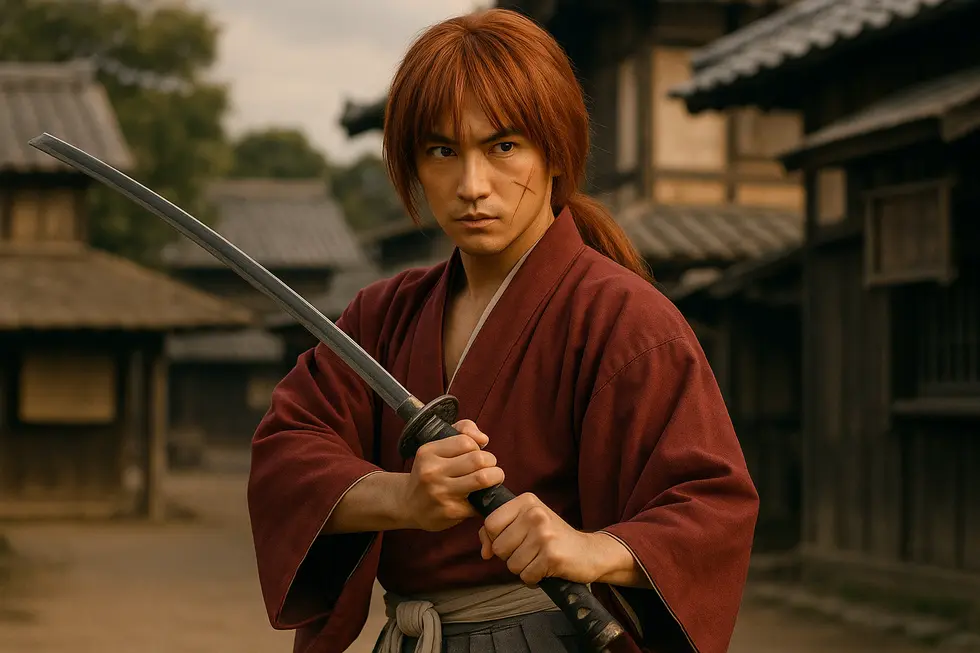
1. Capturing the Essence of the Meiji Era: Historical Reflections in Rurouni Kenshin
Rurouni Kenshin stands out among 90s anime for its profound engagement with Japan’s history, particularly the transformative Meiji Era. The series is set against the backdrop of the aftermath of the Boshin War, a crucial event that dismantled the feudal Tokugawa shogunate, paving the way for the modernization under Emperor Meiji. Through the eyes of Kenshin Himura, a former assassin haunted by past violence, the anime intricately weaves the moral dilemmas faced by individuals amidst national upheaval. Kenshin embodies the conflict between holding onto the ancient samurai ethos and adapting to the emerging ideals of a new society. By dramatizing the abolition of feudal domains and the shift towards centralized power — personified by historical figures such as Ōkubo Toshimichi — Rurouni Kenshin not only entertains but educates viewers on the profound societal changes during this era of rapid modernization and Western influence. Boshin War Wikipedia page.
2. Redemption and Reflection: The Heart of Samurai Conflict in Rurouni Kenshin
In the vibrant world of 90s anime, Rurouni Kenshin shines as a poignant narrative intertwining thrilling samurai battles with deep moral introspection. At its core, the series explores the intricate ethical journey of Himura Kenshin, a former assassin tormented by the dark shadows of his past. Abandoning his lethal ways, Kenshin adopts a reverse-blade sword, symbolizing his vow against killing. This duality in his character, between formidable combat skills and the pacifistic resolve, creates compelling tension and emotional depth. Set during Japan’s Meiji Restoration, the series highlights the cultural clash between fading samurai traditions and emerging modern ideologies. Kenshin’s path reflects a broader societal transition, making the anime resonate on multiple levels beyond mere action. The series skilfully maps this transition through dynamic fight scenes and a redemptive journey, maintaining its legacy as a cornerstone of anime history. For a deeper dive into its cultural impact, you can explore a YouTube Video on Rurouni Kenshin.
Podsumowanie
The anime series of the 90s left an indelible mark on the world, influencing popular culture and fostering lifelong fans. From action-packed shounen adventures to philosophical mecha narratives, these shows enriched the imaginations of their audiences and are cherished classics to this day. Millennials who grew up watching these series continue to share their passion with new generations, ensuring that these iconic stories endure.
Sprawdź ranking i wybierz najlepszą opcję dla swojej rodziny!
O nas
Kreskoweczki.pl to blog o bajkach, anime i filmach animowanych. Piszemy dla fanów kreskówek i nostalgii lat 90.
